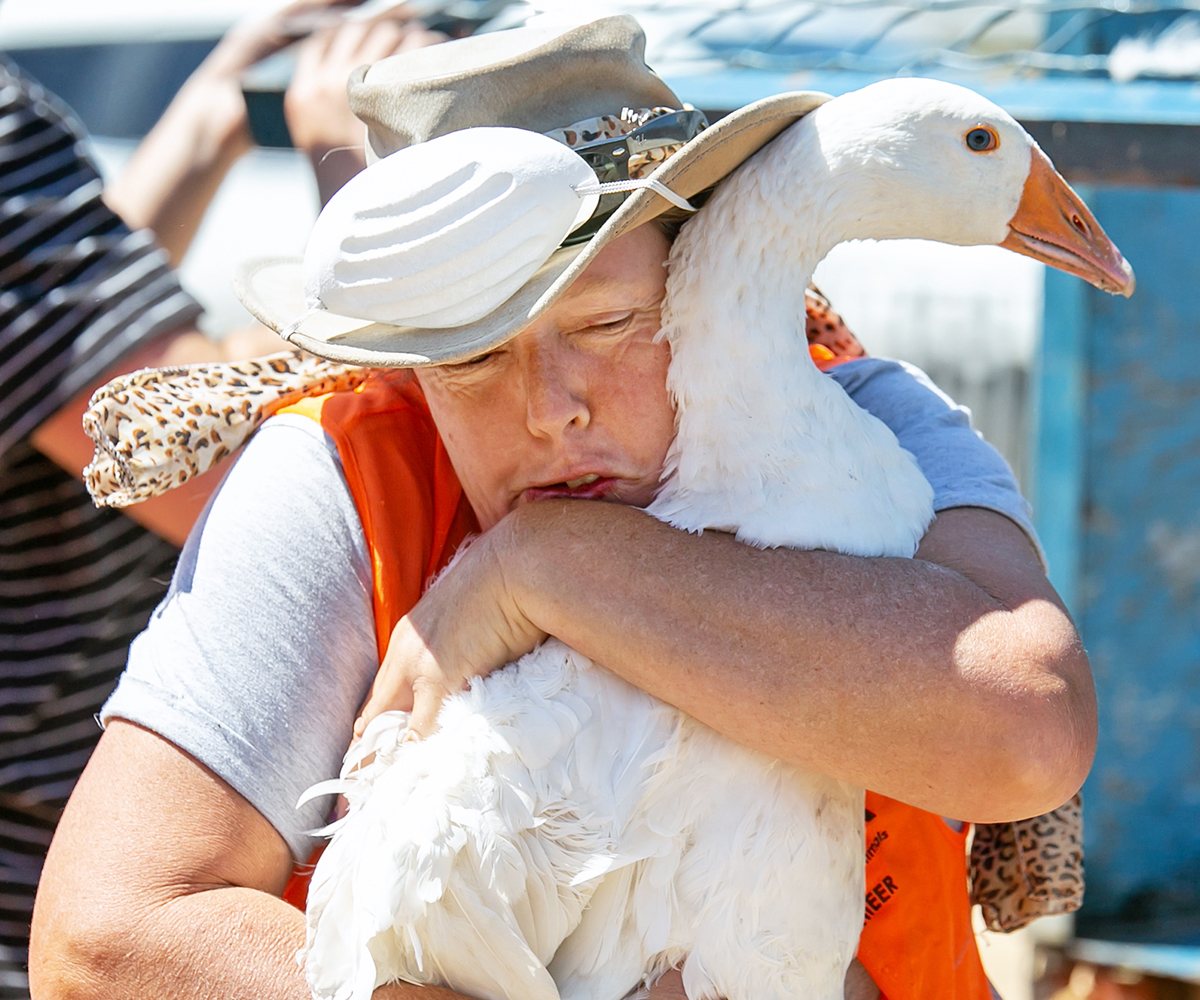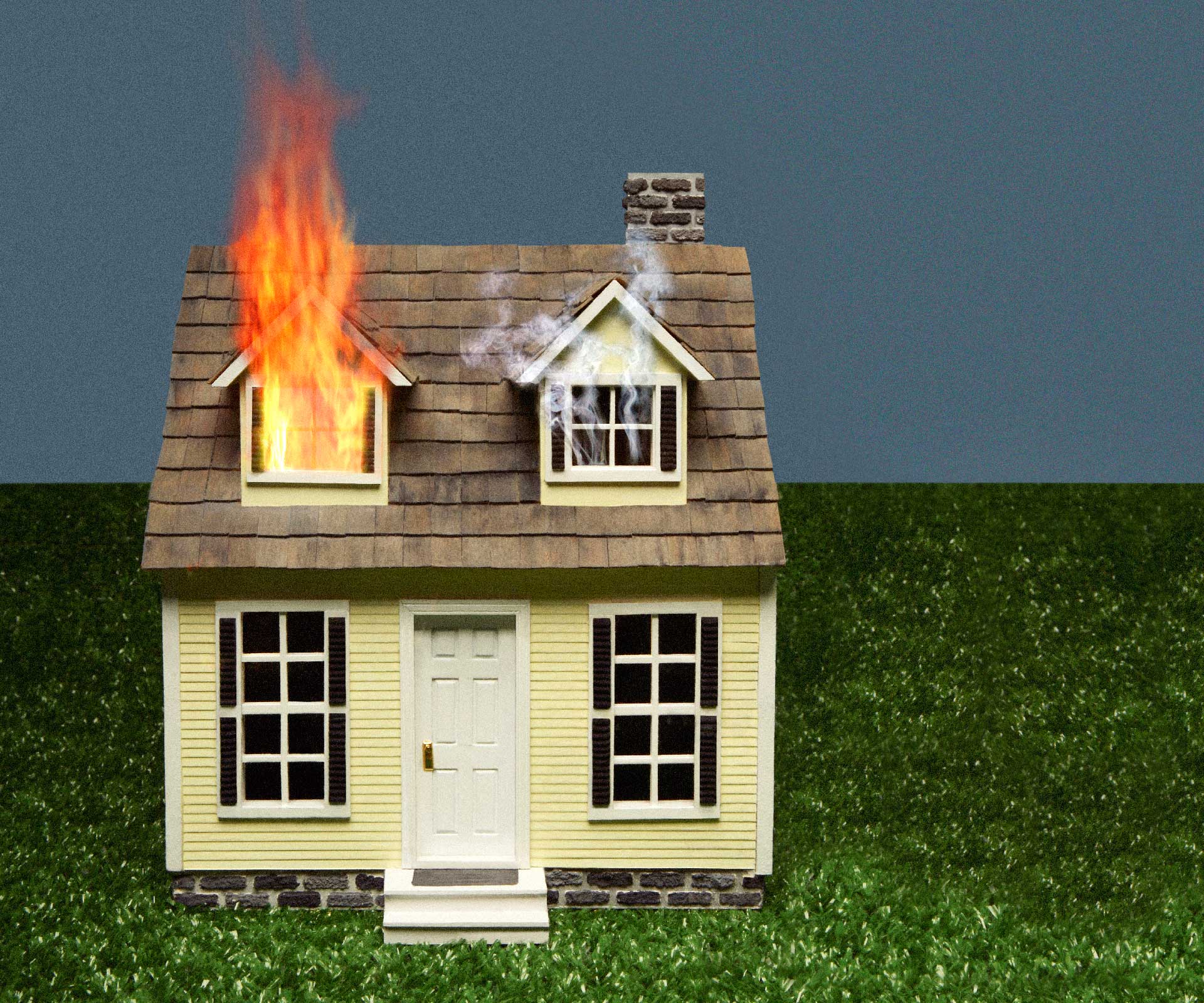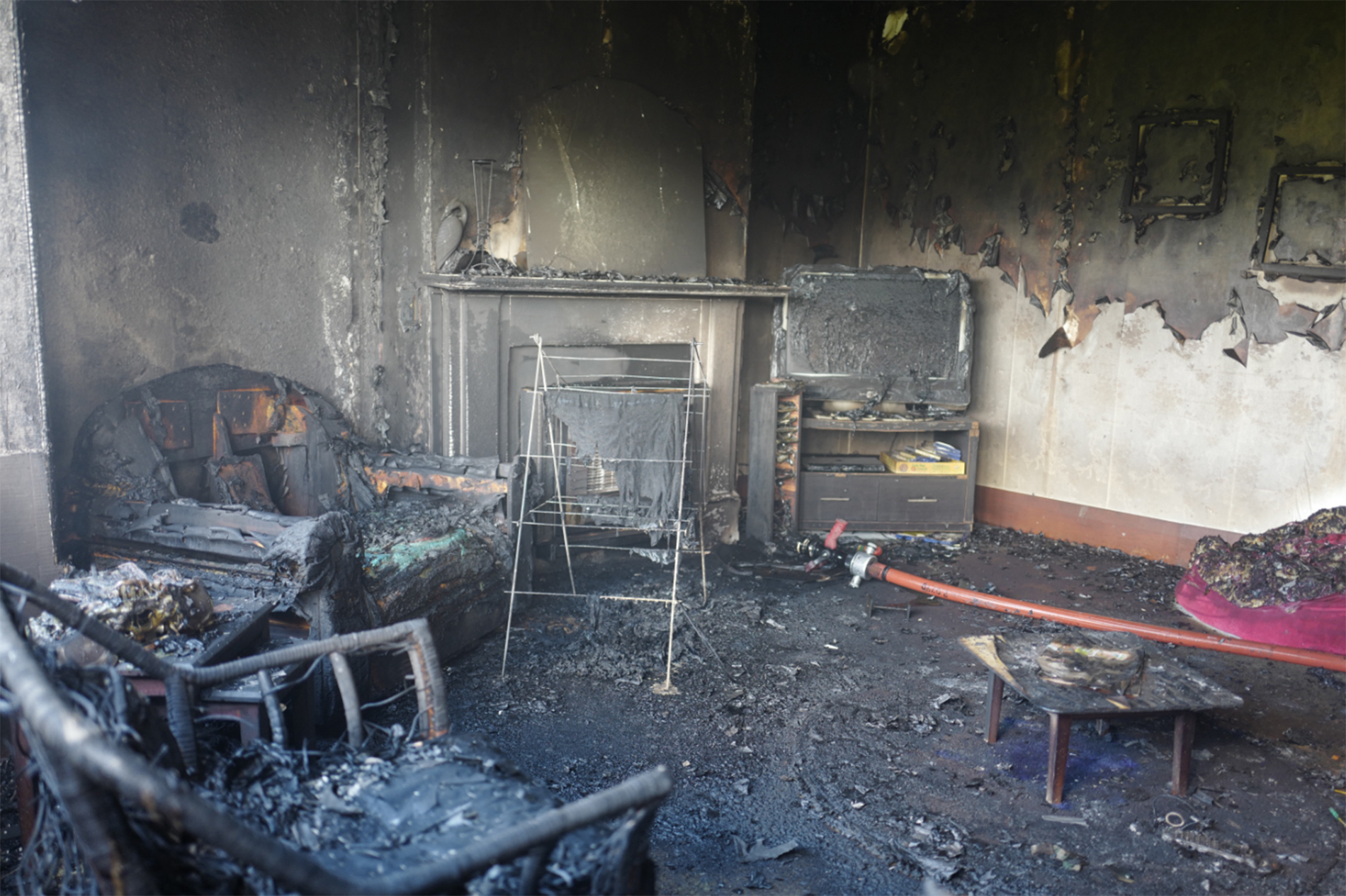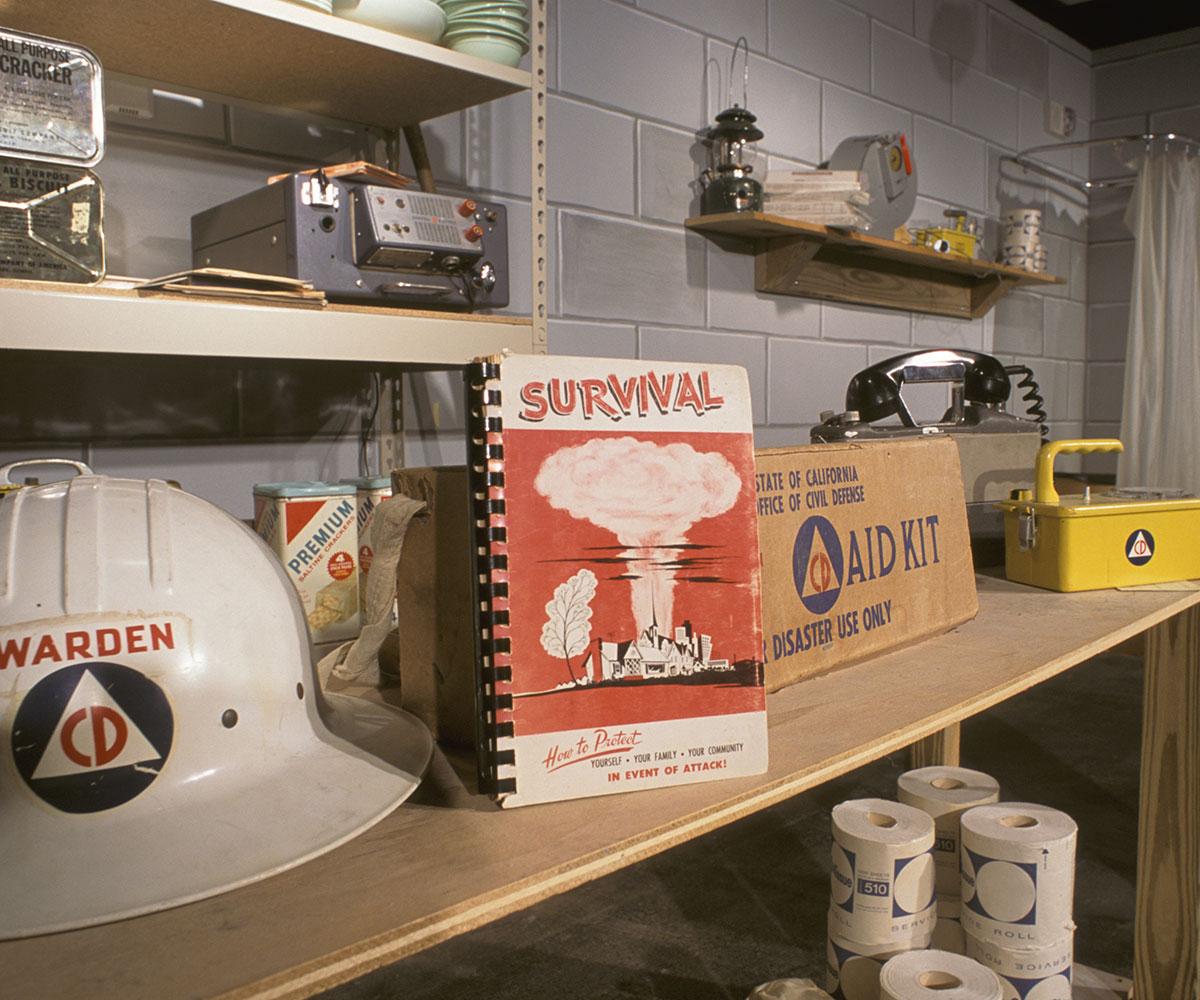It’s been declared the worst wildfire in New Zealand for more than half a century.
After starting in Pigeon Valley 30km south of Nelson on February 5, the fire, fanned by strong winds and hot conditions, soon engulfed the parched, tinder-dry hills, burning across a massive 2341 hectares of forest and farmland.
With thousands evacuated from homes, a State of Civil Emergency was declared as the out-of-control blaze threatened to breach fire breaks and destroy the settlement of Wakefield.
With aircraft mounting an assault from the smoke-filled skies, and scores of firefighters and heavy machinery attacking the 35km-long perimeter firefront on the ground, the destructive blaze, which has claimed at least one home, continuing to burn a fortnight after it began and firefighters are still damping hotspots.
The Weekly spoke to some locals who were forced to hastily pack up and watch as towering flames inched closer to their properties.
Nelson’s ark
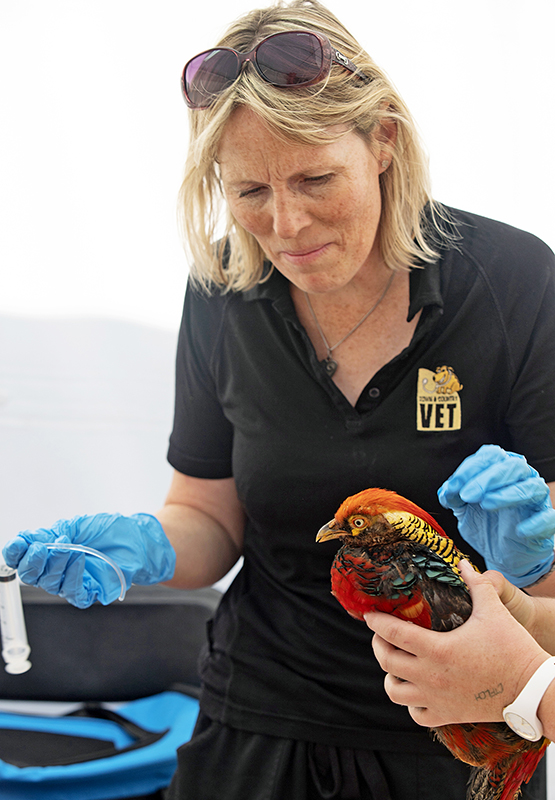
Vet Paula Oram rescues a bird. Above, Margaret Napier cuddles a goose. Photographs by Jo Moore.
As animal welfare advocate Carolyn Press-Mckenzie stood on the lush manicured lawns of Wellington’s Government House on Waitangi Day, dressed to the nines, her mind was hundreds of kilometres away.
She was distracted by the plight of animals on a hoarder’s property in a valley threatening to erupt into flames near Nelson.
Finding it increasingly difficult to enjoy the garden tea party, the 49-year-old instructed her husband to take her straight to the airport, swinging by an outdoor store to change from her glamorous outfit into one that would stand her in good stead for messy business.
“I rushed into Macpac and said, ‘Where is the sales rack? I don’t have a lot of money, but if you could just dress me − including underwear!’ Everyone just rushed around throwing clothes on me and I’m still wearing the same ones,” confesses Carolyn to the Weekly days later.
Arriving in Nelson barely 24 hours after the wildfire broke out, the founder of Helping You Help Animals (HUHA) had experience establishing shelters and relocating animals in times of natural disaster but realised this would be on a scale never before seen in New Zealand.
As strong winds fanned the towering flames and hundreds of residents in outlying Nelson communities were put on standby to evacuate, Carolyn convinced government officials of the need for a temporary animal refuge, and transformed the city’s showgrounds into a sanctuary for the livestock and pets of evacuees.
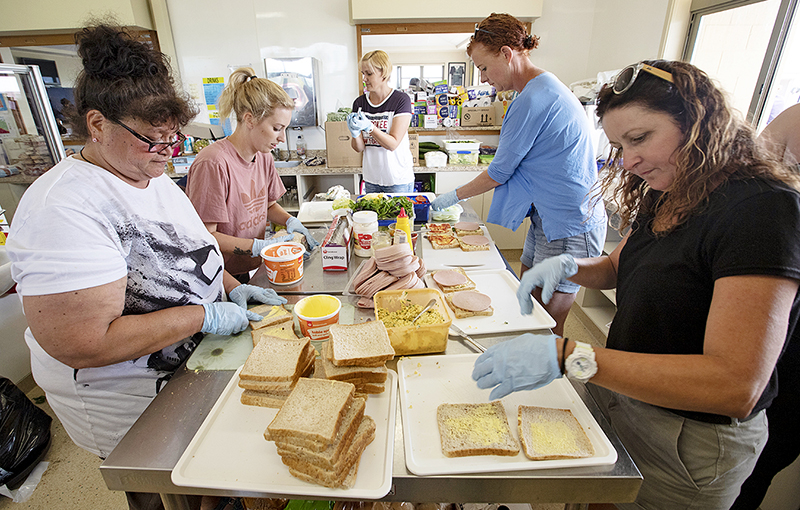
Volunteers preparing meals to feed emergency services crews. This photograph and the others, below, by Tim Cuff.
She says everyone was carrying a great deal of stress, with many people not knowing if they had a home to return to at the height of the fire crisis.
“It was unbelievably huge. And it was emotional. The people were broken, but I was incredibly proud because we built a facility in a matter of days and grew it as the people kept coming.”
She says 955 animals, ranging from a single turtle through to 48 quails, were cared for at the height of the emergency.
“We did it the way we do it at home, dogs playing in groups with swimming pools and toys and not a stark barrack-like situation. It was, ‘Come in, there is love here, your animals will be safe,'” tells Carolyn.
She says what made her so proud was building something so functional that created less stress for people in the area.
“People could walk in and breathe a sigh of relief because suddenly they could see what we built and they could trust us. I don’t know how I would feel passing my pet over if I was in a state of distress − it would be huge for anybody but we demonstrated trust in our actions and what they could see in front of them, which meant they could go away and deal with what they needed to deal with.”
With a State of Civil Emergency still in effect two weeks after the fire broke out and firefighters expected to be damping down hotspots until the middle of March, Carolyn says she will stay at the centre until the last animal is able to return home.
“We’re starting to see the light at the end of the tunnel at the moment, which is great,” she says. “I’ve started it so I’m going to finish it for sure.
Taking pets under her wing
The last thing animal lover Margaret “Skippy” Napier wanted was pet geese Honkers and Bonkers taking flight just minutes after arriving at the emergency animal sanctuary.
The first Nelson local to answer the call for help when HUHA founder Carolyn requested spare dog kennels to house evacuated pets at the showgrounds, Margaret (49) found herself wrangling a variety of animals brought into the makeshift compound by anxious owners fleeing the raging wildfire.
When she first met the frightened pet geese there was only an open air pen available for them and that posed a problem. Holding on for dear life, Margaret wrapped her arms firmly around the birds’ soft and feathery torsos.
“They were stressed and I was just telling them, ‘Shhh, you’re going to be all right.’ They’re so beautiful, I felt like a big kid in a lolly shop.”
She quickly clipped their wings with a pair of kitchen snippers she happened to have in her pocket, ensuring they would remain in the safety of the pen.
Since then the geese have enjoyed hot days swimming in their own pool.
“I plonked them in there for a cool-off,” Margaret tells the Weekly.
The former Australian, who moved to Nelson just over 20 years ago and shows Golden Retrievers in competitions, says she felt compelled to stay to help out in any way she could.
“I’ve pretty much lived here. I just love all animals.”
A classic escape
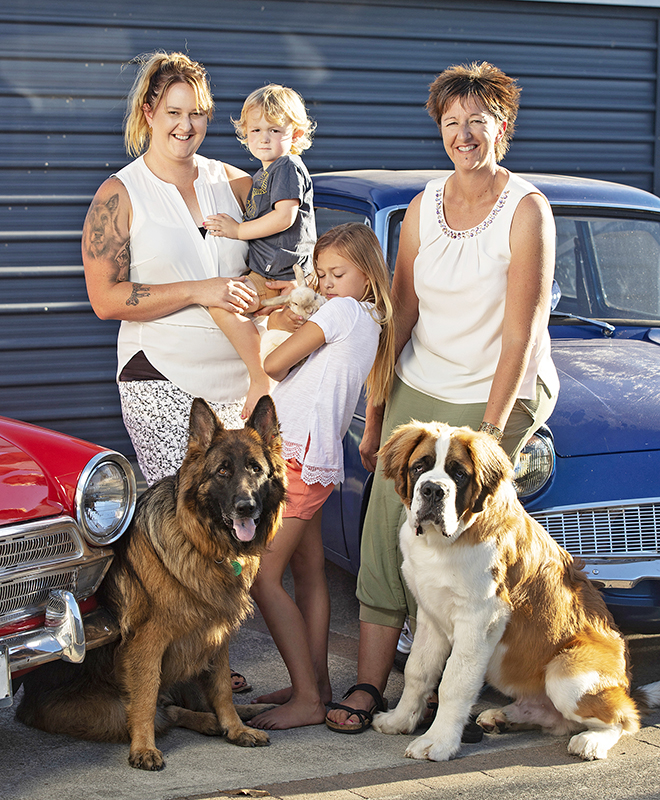
Brittany, Jeydin, Paige and Rebecca, with pets Axel the German Shepherd, Sweet-He the rabbit and St Bernard Bentley, all made it out safely.
As the flames and smoke billowed above the hills opposite her home, Rebecca Jacobsen knew it wouldn’t be too long before she would have to leave.
When the text came, late one Thursday afternoon, it was, she recalls, “chaos”.
Rebecca (39) and her sister Brittany (30) were among the first of the Wakefield residents to be evacuated as Pigeon Valley burned.
As they began packing suitcases with clothes, jewellery, passports and any other important documents they could get their hands on, Brittany’s two children Paige (7) and Jeydin (3) grabbed armfuls of their favourite toys. Brittany’s partner, 36-year-old James Rees, had already left and was helping battle the blaze alongside other local volunteer firefighters.
Also left to organise was three pedigree dogs, German Shepherds Ash and Axel, and Bentley, a six-month-old St Bernard; a trio of cats; Sweet-he, the rabbit; and Rebecca’s pride and joy – her shiny red 1964 Mk1 Cortina, which (along with another classic car, a ’62 Ford Anglia) Rebecca, her dad and James had all hada hand in restoring over a number of years.
The cats and Sweet-he were looked after at an animal shelter set up by the vet, the kids camped for the first few days at Rebecca’s brother Chris’ place in the Brook, while Rebecca and Brittany stayed in Tahunanui with James’ parents.
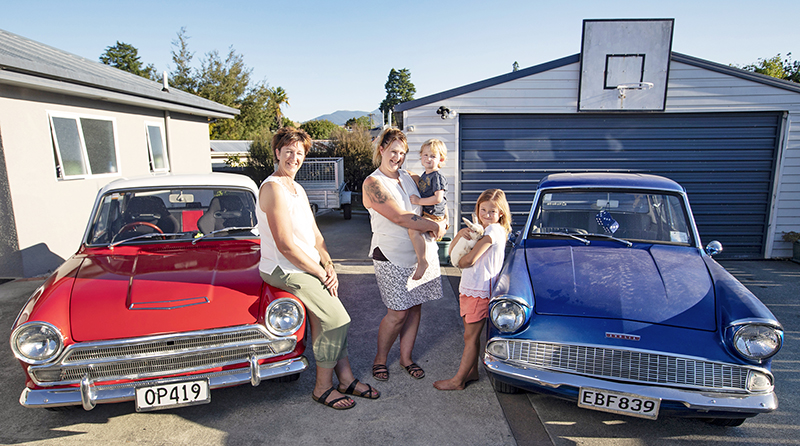
Chris (42) was also responsible for one of the dogs and for getting the Cortina to safety.
“It was a mad rush really,” tells Rebecca.
“It was one of those, ‘Okay, what do we take?’ moments. The kids were filling up the back of the ute with their toys and I was trying to decide how I could get the cars out. In the end, I got Chris to take the most valuable one because it would be hard to replace and I left the Anglia there.”
The family were allowed to return home on the afternoon of February 11, with the proviso that if the fire flared up at any stage over the next seven days they would have to leave again.
Says Rebecca: “We’ve left quite a lot of our stuff at Tahunanui, just until we’re sure this is over. We don’t want to have to pack and run again.
“Listening to the helicopters that are still up there with their monsoon buckets, and seeing police and the Red Cross, who were around door-knocking to make sure people were okay, is sort of surreal. It’s one of those things you expect to see somewhere else, not in your own little backyard.”
Helpless, but far from hopeless
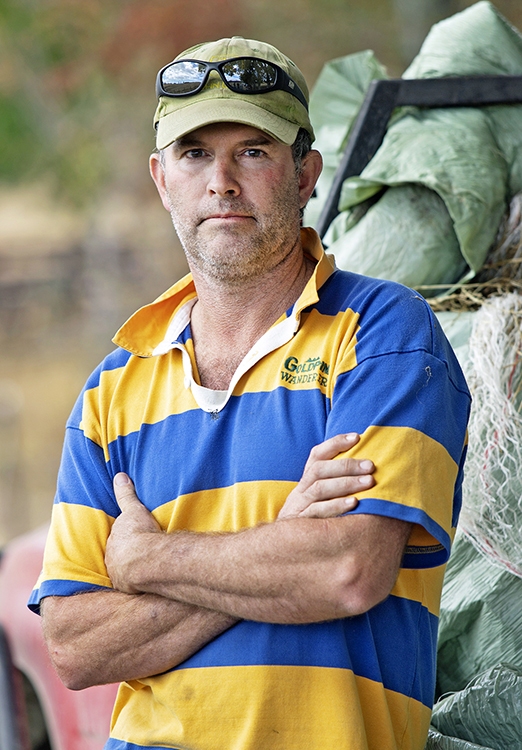
The emergency is still not over, but Tim King, Tasman District deputy mayor, is thankful for the way locals have come together to help one another.
When Tasman District deputy mayor Tim King fled his Eves Valley home, taking the most prized possessions with him,
he was certain there would be nothing but charred ruins upon his return.
With several hours to prepare ahead of the evacuation, the farmer and politician managed to move his stock to safer pastures and, with the help of friends and neighbours, packed treasured family photos and kids’ videos before the looming firewall forced his family to go.
“Over that night, Gail and I resigned ourselves to not seeing our house again because it was pretty dramatic,” he admits to the Weekly.
“You could see it coming from behind the hill. Once we left there was really nothing else we could do over the next 24 hours,” he tells, saying neither managed to sleep that night.
“It was a huge sense of relief to find that we had something to go back to, thanks to the massive amount of work by the firefighters and helicopter pilots, and everyone who worked to support them.”
Mindful that others in the path of the blaze weren’t as fortunate, Tim (49) says the home he grew up in was spared by just metres.
“I’ve seen photos from 3am when it was at its height, and the burn marks from behind our house are just 10 metres from the back and much closer to the sleepout. It was right to the back of that. We’ve been phenomenally lucky.”
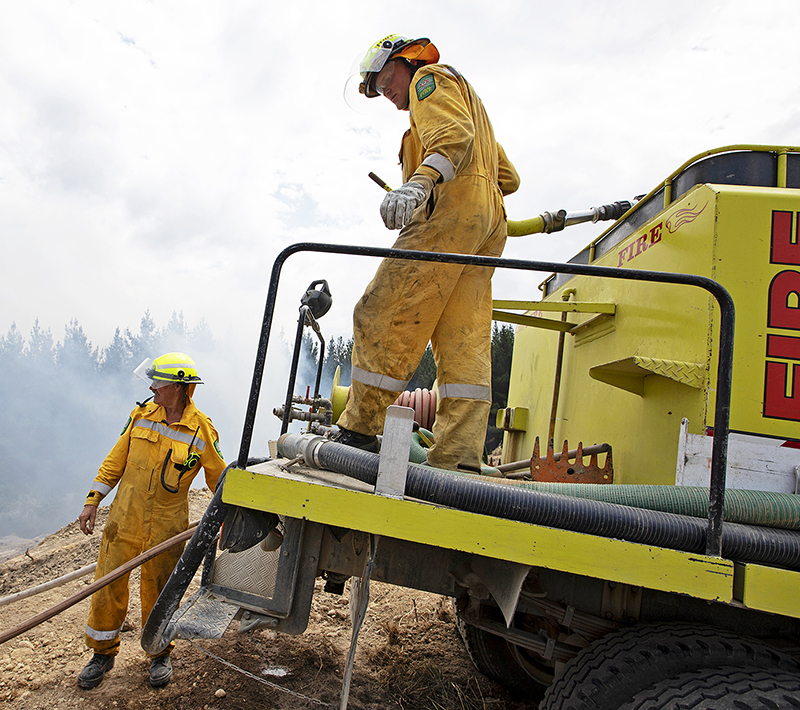
Firefighters fight smoke billowing across Teapot Valley.
Despite only permitted a few hours a day to tend stock, Tim is full of praise for the generous and widespread support from those who have rallied despite facing destruction and loss.
“The support we’ve had from people and the way the community’s come together is amazing. There’s a constant stream of people going into the local rugby club every day, either bringing in goods or making sandwiches. So many people are putting in an effort behind the scenes to ensure that those on the frontline − who are doing such a good job on the helicopters, diggers, bulldozers and fire engines − are all fed, watered and looked after. It’s been a massive community effort and it’s been cool,” says the proud local leader.
“To think this time last year in Nelson we were dealing with Cyclones Gita and Fehi so we had floods, mayhem and chaos here for exactly the opposite reason. It’s bizarre.”
